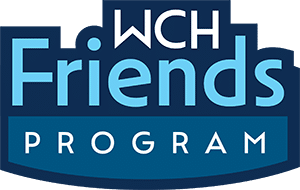
Physical therapy is a form of medical care that can help to reduce physical pain, strengthen muscles, improve mobility, and build up endurance. Not only is it beneficial in helping to treat underlying conditions or injuries, but it can also be used as preventative care to maintain good health and normal functionality. There are many different types of physical therapies available that address a variety of patient needs and challenges.
WHAT IS PHYSICAL THERAPY AND WHY DO WE NEED IT?
Physical therapy is a branch of healthcare that aims to help individuals improve their mobility, function, and overall well-being. It involves a range of treatments and techniques designed to ease pain, prevent injuries, and promote healing.
Physical therapists work closely with patients to develop personalized treatment plans, which may include stretching, strength training, massage, and other exercises. The benefits of physical therapy are numerous, from reducing pain and improving range of motion to enhancing balance and preventing falls. Whether you are recovering from an injury, managing a chronic condition, or seeking to improve your fitness and performance, physical therapy can help you achieve your goals and feel your best.
TYPES OF PHYSICAL THERAPY
Physical therapy has become an increasingly popular form of treatment for various physical conditions. From sports injuries to chronic pain, physical therapy offers a range of specialized treatments that help restore function and reduce pain. Some of the most common types of physical therapy treatments include exercises, manual therapy, and modalities.
Exercises aim to improve flexibility, strength, and endurance while manual therapy addresses joint and soft tissue mobility. Modalities such as heat, ultrasound, and electrical stimulation can provide relief from pain and inflammation. With the help of a skilled physical therapist, patients can often experience improvements like regaining their independence and improving their quality of life through personalized treatment plans.
THERAPEUTIC EXERCISE AND STRENGTHENING EXERCISES
Therapeutic exercise and strengthening exercises are both important components of a well-rounded fitness routine, but they serve very different purposes. While strengthening exercises aim to build muscle and increase overall physical strength, therapeutic exercise focuses on healing and preventing injury.
These types of exercises are often prescribed by healthcare professionals to address specific conditions or injuries and can include anything from range-of-motion exercises to balance training. By incorporating both types of exercise into your routine, you can reap the benefits of increased strength and flexibility while also addressing and preventing any areas of weakness or vulnerability.
CARDIOVASCULAR AND PULMONARY PHYSICAL THERAPY
Cardiovascular and pulmonary physical therapy is a specialized technique that focuses on improving the efficiency of the cardiovascular and pulmonary systems. Patients who suffer from conditions such as chronic obstructive pulmonary disease (COPD) or heart failure can benefit from this therapy.
The therapist will work with the patient to develop an individualized treatment plan, which may include exercises, breathing techniques, and other interventions. Through regular therapy sessions, patients can improve lung function, increase endurance, and reduce symptoms. With the guidance of a skilled physical therapist, patients can live fuller, more active lives.
MANUAL THERAPY AND MYOFASCIAL RELEASE
Manual therapy and myofascial release techniques are forms of hands-on therapy that can treat a wide range of musculoskeletal and neuromuscular conditions. These therapies involve skilled manipulation of soft tissue to help reduce pain, improve range of motion, and promote healing.
With manual therapy, a therapist uses hands-on techniques to mobilize joints and soft tissues, while with myofascial release, therapists use sustained pressure on the connective tissue surrounding muscles to release tension and restore mobility.
Both therapies can be effective for treating conditions like back pain, sciatica, “frozen shoulder,” and more. For those seeking an alternative to medication and surgery, manual therapy and myofascial release techniques can offer a natural and effective path to healing.
NEUROMUSCULAR RE-EDUCATION AND SENSORY MOTOR TRAINING
Neuromuscular re-education and sensory motor training are two techniques often used to help individuals improve their movement and coordination. Neuromuscular re-education focuses on restoring proper function to muscles and nerves that may have been damaged, while sensory motor training is designed to enhance the body’s ability to recognize and respond to different stimuli.
Both techniques can be used to help individuals regain their strength and mobility after an injury or surgery or to improve athletic performance. By working with a skilled therapist or trainer, individuals can learn how to improve their motor skills and better interact with their environment. Whether you are recovering from an injury or looking to enhance your athletic performance, neuromuscular re-education, and sensory motor training can be valuable tools in achieving your goals.
PHYSICAL THERAPY IN WOOSTER, OH
Physical therapy can help not just restore range of motion and function but also contribute positively to overall well-being. Here at Wooster Community Hospital, we have highly trained and skilled physical therapists who are always ready to provide you with the care you need to get back to doing the things you love most. Our therapists will work with your schedule to create a physical therapy program that delivers the best possible outcome.
To know more about our services or schedule a consultation, call us today at (330) 202-3300 or fill out our online appointment request form now.

 Cancer Care
Cancer Care
 Rehabilitation
Rehabilitation
 Women's Health
Women's Health
 Behavioral Health
Behavioral Health
 Cardiovascular Care
Cardiovascular Care
 Surgery
Surgery


